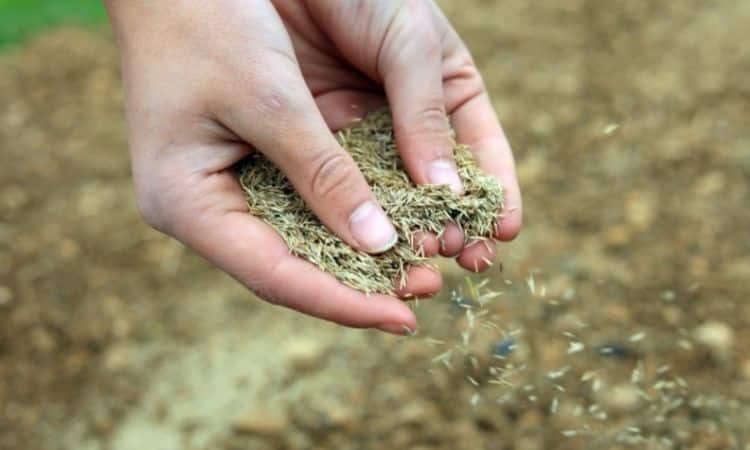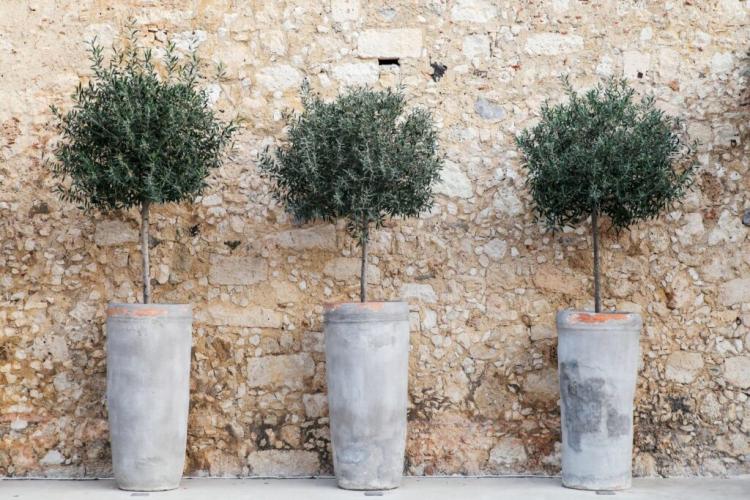Tall Fescue: All About The Festuca Arundinacea At A Glance
We explain everything important about the characteristics and varieties of Festuca arundinacea and show the benefits of fescue seeds in lawns. Many plants are true survivors, but the tall fescue (Festuca arundinacea) takes the discipline of indestructibility to the extreme. Hardly any adversity in its environment can stop its growth. In the following, you will learn all about the great strengths and small weaknesses of this special grass and how to use fescue seeds, for example in dry lawns.
Tall Fescue: Origin And Description
Table of Contents
The tall fescue has a broad location tolerance, which is also clearly reflected in its natural distribution: North Africa and Europe, as far as to northwest-China and the Himalayas calls the grass its home. Like Lolium perenne, Poa pratensis, Poa trivialis, or its relative Festuca Rubra, it belongs to the sweet grass family (Poaceae).
It is perennial, so it grows again every year and over a long period of time. It mainly forms clumps as well as short rhizomes to spread. The leaves of the cane fescue are very broad and coarse compared to those of other grasses. Its roots reach exceptionally deep into the soil.
Because tall fescue can live with moisture and waterlogging as well as with dryness and heat, it colonizes wet meadows, embankments, and roadsides, and meadows. It grows on both slightly acidic and slightly alkaline soils and does not spurn sandy or loamy subsoils.

Properties And Use of Tall Fescue
For a quick overview, we have summarized everything important about tall fescue:
The pipe swing in brief
| Characteristics | Loose nests, wide leaf, leaf top matte, leaf underside shiny, strong roots |
| Claims | Low demands on all surrounding environmental conditions |
| Durability | High |
| Use | Dry turf, stretcher turf, sports, and play turf, biotope areas |
| Germ duration and development | 9 – 16 days, fast-growing, but less competitive |
| Minimum cutting height | 30 – 40 mm |
| Specifics | Particularly insensitive to drought and heat, very wide location tolerance, hardly susceptible to lawn diseases |
Tall fescue forms loose clumps with its broad, dull leaf. Its roots are strong, multi-branched, and reach deep into the soil. It makes hardly any demands on its environment and can grow successfully in different soils and different climates.
The plant is hard-wearing in the lawn and tolerates treading and regular pruning quite well. It germinates and grows quickly, but is not very competitive with other grasses. The vast majority of lawn diseases can hardly harm fescue, but some varieties are susceptible to Fusarium rot.
Tall fescue is spurned by grazing animals, which is why it is unsuitable as fodder grass. It, therefore, shows its strengths mainly as grass in special mixtures for dry grassland.
Tip: Although the tall fescue has many advantages, it also has two disadvantages: It has rather coarse, broad leaves, which give a somewhat uneven, rough appearance to a lawn. In addition, it can hardly stand up to other lawn grasses.
Different Varieties of Festuca arundinacea
Despite its already good natural properties, the reed fescue was nevertheless further improved by the human hand. The aim of breeding the Tall Fescue has always been to maintain a high tolerance to the environment while increasing its competitiveness against other grass grasses and weeds and refining its appearance.
Festuca arundinacea Barcesar
Rather fast-growing; only slightly green in winter; fine leaves (compared to other varieties of the species); good scar density; good competitiveness against weeds; hard-wearing; high resistance to many lawn diseases; equally well suited for play and sports lawns, hard-wearing lawns and domestic lawns in dry locations.
Festuca arundinacea SC1
Medium to fast growth; still sufficiently green even in winter; fine leaves (compared to other varieties of the species); nice dense scar; sufficiently competitive against weeds; a quite high durability; high resistance to many lawn diseases; good suitability for sports turf, play, and sports turf as well as domestic lawns in dry locations and hard-wearing lawns.
Festuca arundinacea Debussy 1
Medium-fast growth; green even in winter; coarse leaf; nice dense scar and good competition with weeds; good durability; resistant to the most important lawn diseases; suitable for utility turf, sports, and play turf, and domestic lawns in dry conditions and hard-wearing lawns. 
Festuca arundinacea Divyna
Fast-growing; only slightly green in winter; extremely coarse leaf; sufficiently good scar density and equally competitive with weeds; not very hardwearing; resistant to all major lawn diseases; sufficiently suitable for domestic lawns in dry locations, hard-wearing lawns, sports turf and play and sports turf.
Festuca arundinacea Eyecandy
Fast growth; only slightly green in winter; extremely coarse leaf; good scar density and competitiveness against weeds; less durable; sufficient resistance to all lawn diseases; moderately suitable for sports turf, domestic lawns in dry locations, as well as play and sports turf






